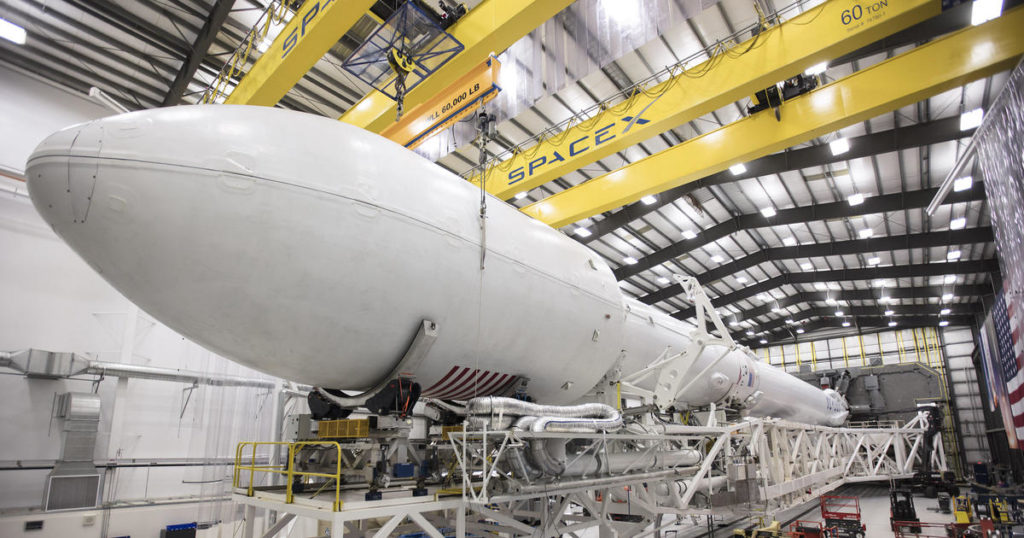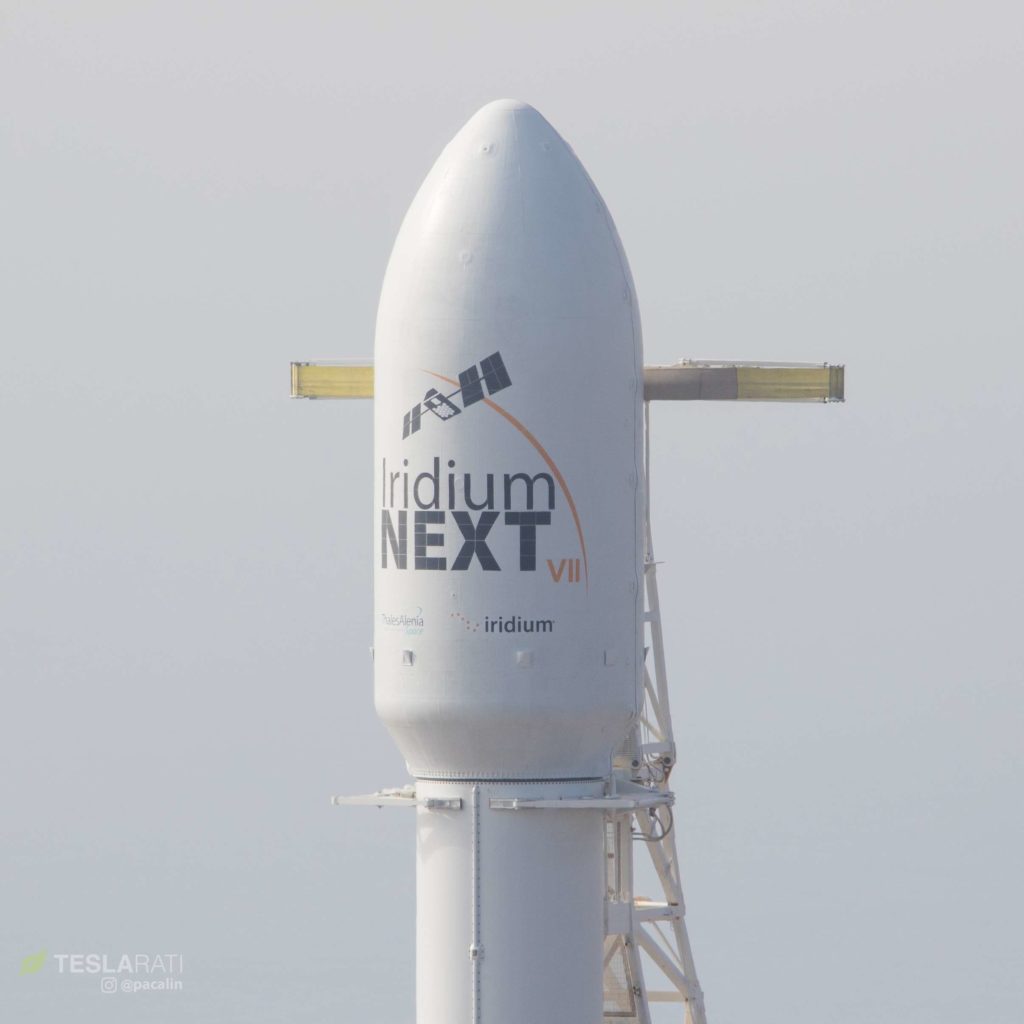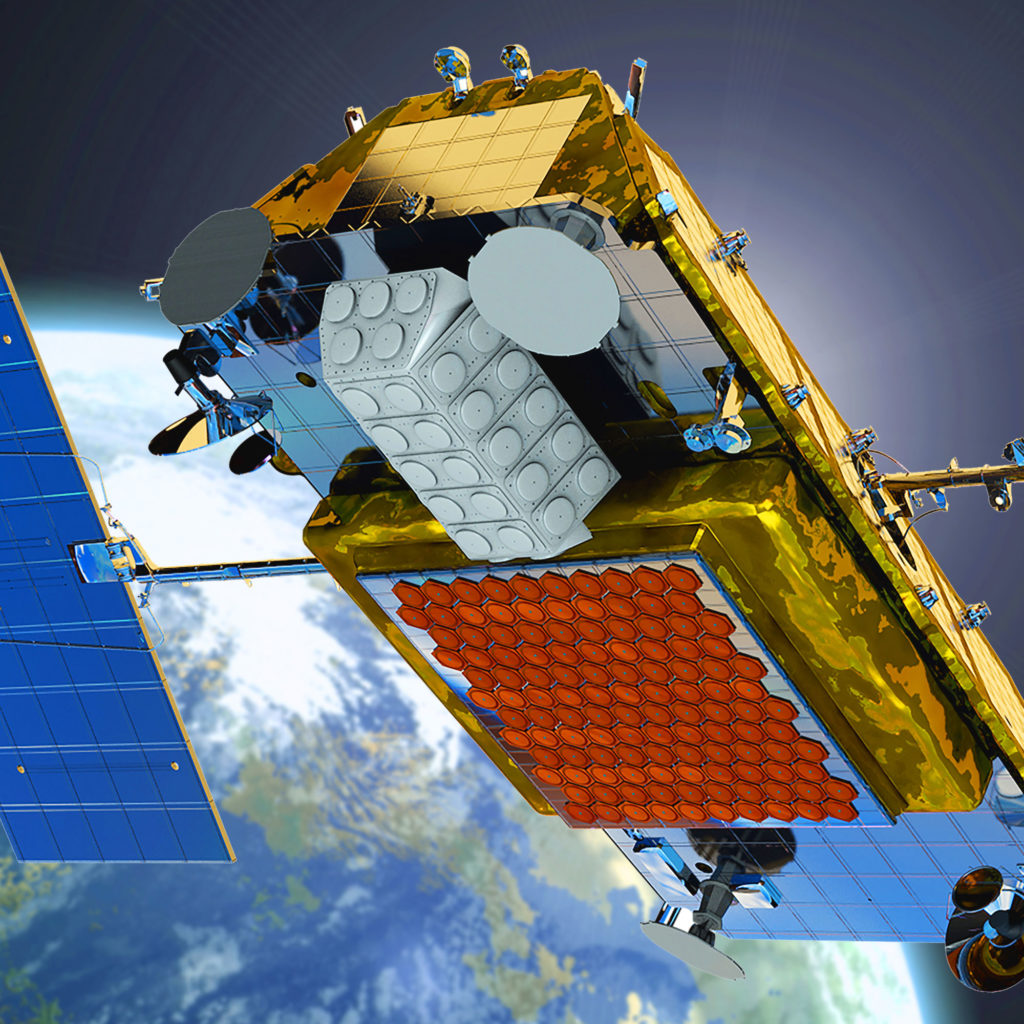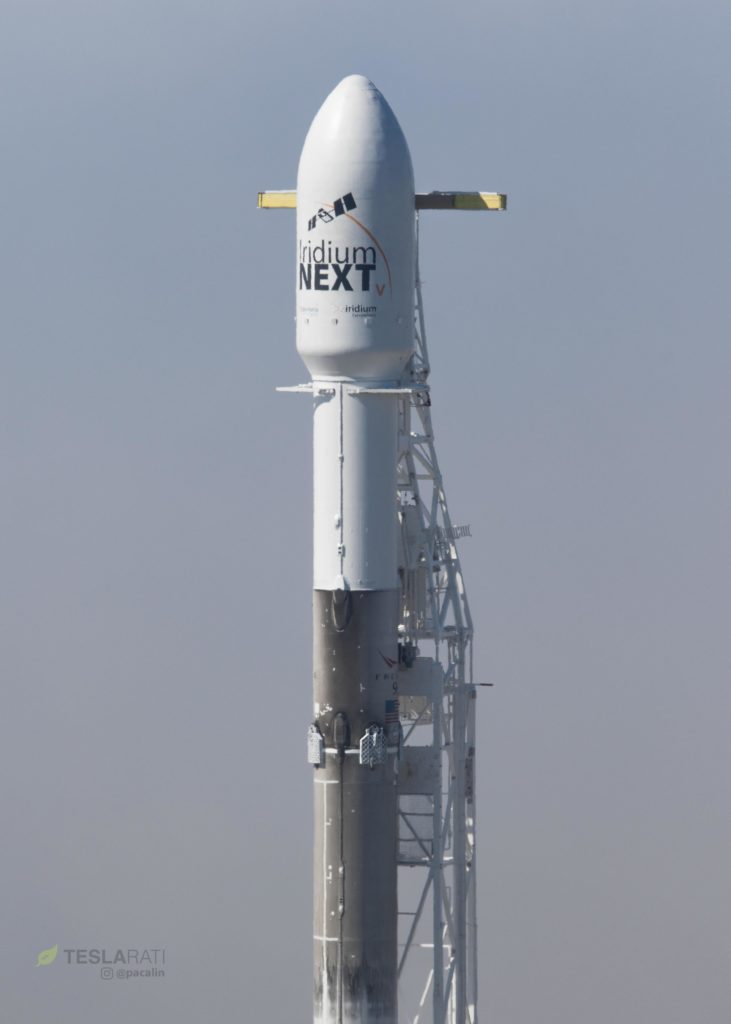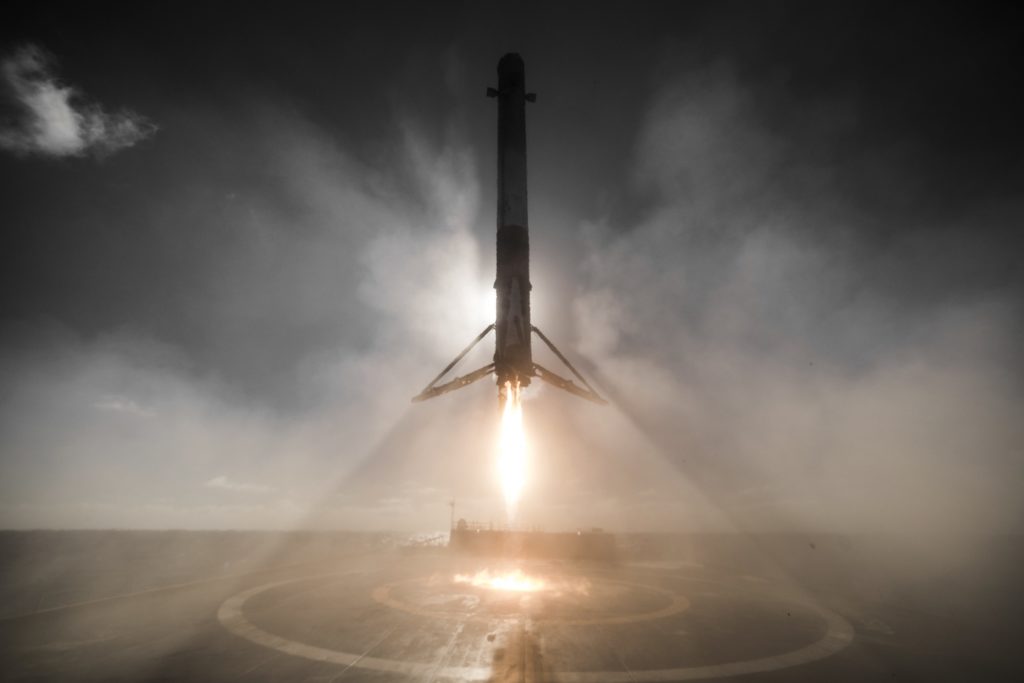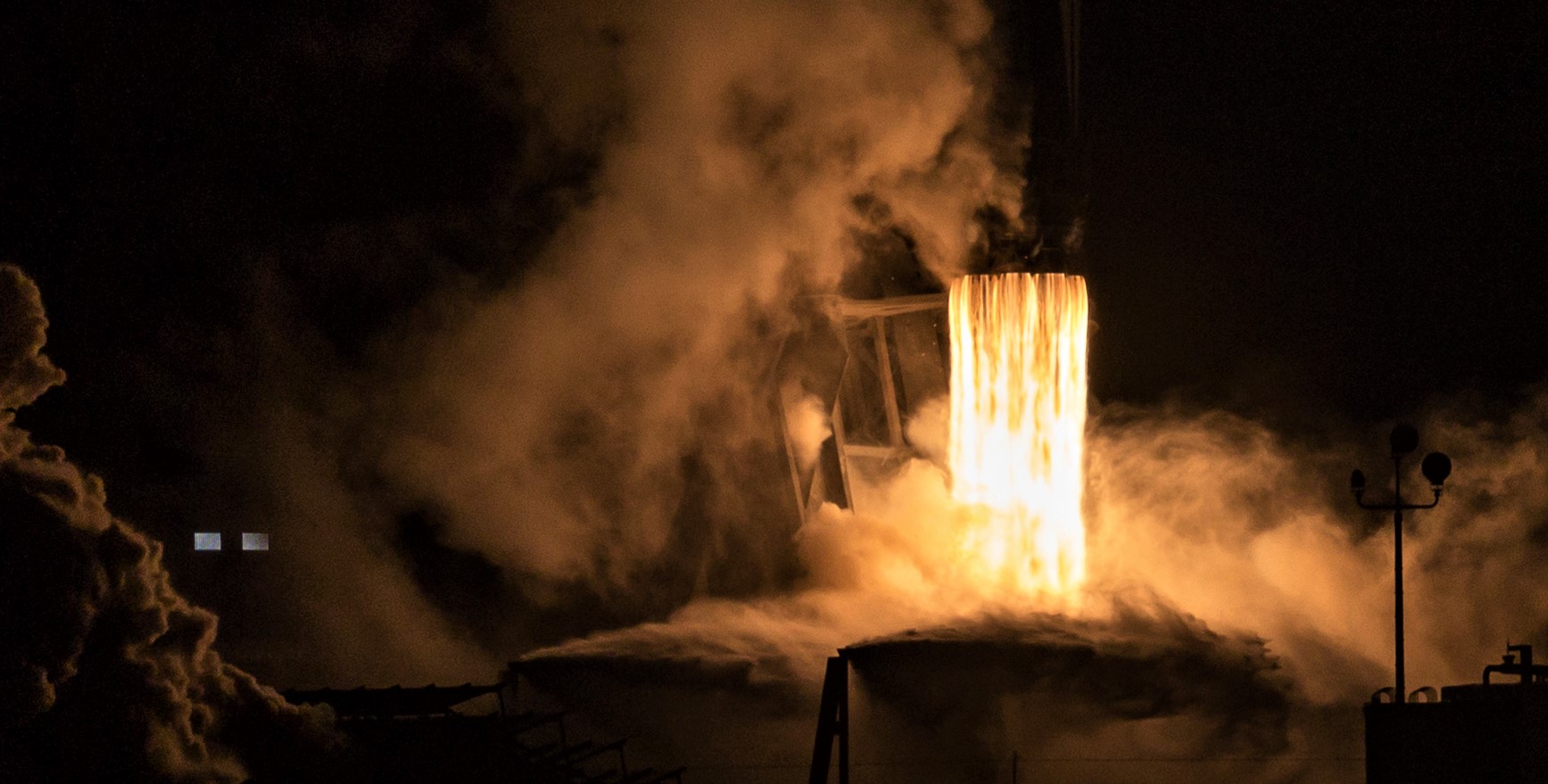

News
SpaceX tracks towards first launch of 2019 with flight-proven Falcon 9 static fire
SpaceX has completed a Falcon 9 static fire test ahead of the company’s first launch of 2019, kicking off what is looking to be a truly jam-packed year for Falcon 9 and BFR. Most important, of course, is SpaceX’s primary business and main sources of revenue – safely and reliably launching customer satellites, payloads, and – soon – astronauts into orbit.
Previously tasked with launching heavy communications satellite Telstar 18V in September 2018, Falcon 9 B1049 is now set to launch an arguably historic mission for both SpaceX and customer Iridium, the eighth and final contracted launch of the upgraded Iridium NEXT satellite communications constellation.
Static fire test of Falcon 9 complete. Working with customer to determine best launch opportunity to complete the Iridium NEXT constellation; will announce targeted launch date once confirmed.
— SpaceX (@SpaceX) January 6, 2019
Struck all the way back in June 2010, Iridium’s decision to award the full NEXT constellation launch contract to SpaceX less than two weeks after Falcon 9’s first and only launch may well be the greatest calculated leap of faith in the history of commercial spaceflight. SpaceX did admittedly offer an unbeatable price ($492M for eight launches, $61.5M per launch) that may have allowed Iridium to afford a new constellation in the first place, but the risk Iridium took was truly immense at the time.
Originally launched between 1997 and 1998, the first Iridium constellation became and still remains the only satellite communications constellation in history to offer global and persistent coverage anywhere on Earth, allowing those with Iridium devices to guarantee connectivity no matter where they are. To some extent, the original constellation has become a subtle but omnipresent backbone of a huge variety of ventures, companies, and services, ranging from marine vessel tracking and emergency response to the go-to solution for those heading far off the beaten path. As just one small example, SpaceX’s large fleet of sea-going vessels and its cross-country transport infrastructure both rely on Iridium for streamlined company-wide movement tracking, making life considerably easier for logistics and planning teams.
@SpaceX #falcon9 vertical at SLC-4. Iridium NEXT-8 slated for 01/08 from #VandenbergAFB. #spacex #iridium pic.twitter.com/uJBIgG5Lrp
— Brian Sandoval (@sandovalphotos) January 6, 2019
Iridium’s decision to use SpaceX for its NEXT constellation likely also gave SpaceX a massive stature boost, taking it from the company with just a handful of commercial contracts that had failed three of its last five launches to the company that secured what was at the time the largest single commercial launch contract in history. Alongside NASA’s Commercial Orbital Transport Services (COTS) and Resupply Services (CRS) commitments (~14 launches as of 2010), Iridium NEXT raised SpaceX’s commercial manifest from perhaps 2 missions to ~10 while also taking the value of those contracts from an almost negligible sum to well over half a billion dollars.
Although SpaceX and Iridium originally planned for launches to take place over a roughly 24-month period stretch from 2015 to 2017, unplanned technical delays and a duo of catastrophic Falcon 9 failures (CRS-7 and Amos-6) in 2015 and 2016 ultimately pushed Iridium NEXT’s launch debut back several years. Despite those immense hurdles and a range of smaller issues, SpaceX and Iridium were finally able to begin launching satellites in January 2017 and have continued to consistently do so every 3-4 months since then. Aside from one partial NASA rideshare mission that featured five NEXT satellites in May 2018, all seven launches have placed ten NEXT satellites (weighing approx. 10,000 kg or 22,000 lb total) in a variety of low polar orbits without a single known hitch.
- A rare glimpse inside SpaceX’s SLC-4 rocket integration hangar, January 2017. (SpaceX)
- Iridium-7’s Falcon 9 payload fairing, July 2018. (Pauline Acalin)
- LEO communications satellites like Iridium’s NEXT constellation feature totally flat panels of phased array antennas, capable of forming beams digitally. (Harris)
Falcon 9 enters the era of reusability
Closely following SES, NASA, and SSL (BulgariaSat), Iridium also became the fourth commercial entity to launch on a flight-proven Falcon 9 rocket for the launch vehicle’s fourth flight-proven mission ever. Iridium-8 will become the fourth constellation launch to fly aboard a sooty Falcon 9 rocket, meaning that a full 50% of the next-gen satellites will have launched on reused rockets, easily one of the coolest bragging rights ever. Currently standing at 65 NEXT satellites in orbit and rapidly nearing operational status, Falcon 9 B1049 and a fresh upper stage will (fingers crossed) place the last ten satellites in orbit to complete the constellation’s last plane and seal the last gap in its perfect global coverage.
Although NEXT would have been valuable for the sole reason that its predecessor satellites are now 5-10 years past their designed lifespans, NEXT will also serve to dramatically increase Iridium’s overall bandwidth, slash concurrent user bottlenecks, and provide a platform for new services like Aireon, which hopes to become the first operator of a truly commercial aircraft tracking service with global satellite-based coverage.
- Falcon 9 B1041.2 seen before launching Iridium-5. (Pauline Acalin)
- Iridium-1’s successful and scenic landing on Pacific drone ship JRTI, January 2017. This could be an increasingly rare occurrence in the Pacific, thanks to SpaceX’s new land-based landing zone. (SpaceX)
- 2017 saw SpaceX recovery 10 Falcon 9 first stages, 5 by sea. (SpaceX)
All things considered, it will be hugely bittersweet to watch Iridium and SpaceX’s direct relationship come to a close with the launch of Iridium-8. Aside from nine additional on-orbit spares once all 75 are launched, Iridium will also have a complement of six more spares that will be kept in storage on the ground until they are required in orbit. If or when those times come, SpaceX will be able to compete with other launch providers for the opportunity to carry maybe one or two Iridium satellites – likely as rideshare payloads – into orbit sometime in the future.
Iridium open to rideshares for spare satellite launches https://t.co/ino39oWCHw pic.twitter.com/56PTcaEMW3
— SpaceNews (@SpaceNews_Inc) January 4, 2019
In the meantime, stay tuned for Iridium-8’s official launch time and date, likely to be announced by SpaceX sometime within the next 24-48 hours.
For prompt updates, on-the-ground perspectives, and unique glimpses of SpaceX’s rocket recovery fleet check out our brand new LaunchPad and LandingZone newsletters!
Elon Musk
Tesla begins expanding Robotaxi access: here’s how you can ride
You can ride in a Tesla Robotaxi by heading to its website and filling out the interest form. The company is hand-picking some of those who have done this to gain access to the fleet.

Tesla has begun expanding Robotaxi access beyond the initial small group it offered rides to in late June, as it launched the driverless platform in Austin, Texas.
The small group of people enjoying the Robotaxi ride-hailing service is now growing, as several Austin-area residents are receiving invitations to test out the platform for themselves.
The first rides took place on June 22, and despite a very small number of very manageable and expected hiccups, Tesla Robotaxi was widely successful with its launch.
Tesla Robotaxi riders tout ‘smooth’ experience in first reviews of driverless service launch
However, Tesla is expanding the availability of the ride-hailing service to those living in Austin and its surrounding areas, hoping to gather more data and provide access to those who will utilize it on a daily basis.
Many of the people Tesla initially invited, including us, are not local to the Austin area.
There are a handful of people who are, but Tesla was evidently looking for more stable data collection, as many of those early invitees headed back to where they live.
The first handful of invitations in the second round of the Robotaxi platform’s Early Access Program are heading out to Austin locals:
I just got a @robotaxi invite! Super excited to go try the service out! pic.twitter.com/n9mN35KKFU
— Ethan McKanna (@ethanmckanna) July 1, 2025
Tesla likely saw an influx of data during the first week, as many traveled far and wide to say they were among the first to test the Robotaxi platform.
Now that the first week and a half of testing is over, Tesla is expanding invites to others. Many of those who have been chosen to gain access to the Robotaxi app and the ride-hailing service state that they simply filled out the interest form on the Robotaxi page of Tesla’s website.
That’s the easiest way you will also gain access, so be sure to fill out that form if you have any interest in riding in Robotaxi.
Tesla will continue to utilize data accumulated from these rides to enable more progress, and eventually, it will lead to even more people being able to hail rides from the driverless platform.
With more success, Tesla will start to phase out some of the Safety Monitors and Supervisors it is using to ensure things run smoothly. CEO Elon Musk said Tesla could start increasing the number of Robotaxis to monitors within the next couple of months.
Elon Musk
Tesla analyst issues stern warning to investors: forget Trump-Musk feud

A Tesla analyst today said that investors should not lose sight of what is truly important in the grand scheme of being a shareholder, and that any near-term drama between CEO Elon Musk and U.S. President Donald Trump should not outshine the progress made by the company.
Gene Munster of Deepwater Management said that Tesla’s progress in autonomy is a much larger influence and a significantly bigger part of the company’s story than any disagreement between political policies.
Munster appeared on CNBC‘s “Closing Bell” yesterday to reiterate this point:
“One thing that is critical for Tesla investors to remember is that what’s going on with the business, with autonomy, the progress that they’re making, albeit early, is much bigger than any feud that is going to happen week-to-week between the President and Elon. So, I understand the reaction, but ultimately, I think that cooler heads will prevail. If they don’t, autonomy is still coming, one way or the other.”
BREAKING: GENE MUNSTER SAYS — $TSLA AUTONOMY IS “MUCH BIGGER” THAN ANY FEUD 👀
He says robotaxis are coming regardless ! pic.twitter.com/ytpPcwUTFy
— TheSonOfWalkley (@TheSonOfWalkley) July 2, 2025
This is a point that other analysts like Dan Ives of Wedbush and Cathie Wood of ARK Invest also made yesterday.
On two occasions over the past month, Musk and President Trump have gotten involved in a very public disagreement over the “Big Beautiful Bill,” which officially passed through the Senate yesterday and is making its way to the House of Representatives.
Musk is upset with the spending in the bill, while President Trump continues to reiterate that the Tesla CEO is only frustrated with the removal of an “EV mandate,” which does not exist federally, nor is it something Musk has expressed any frustration with.
In fact, Musk has pushed back against keeping federal subsidies for EVs, as long as gas and oil subsidies are also removed.
Nevertheless, Ives and Wood both said yesterday that they believe the political hardship between Musk and President Trump will pass because both realize the world is a better place with them on the same team.
Munster’s perspective is that, even though Musk’s feud with President Trump could apply near-term pressure to the stock, the company’s progress in autonomy is an indication that, in the long term, Tesla is set up to succeed.
Tesla launched its Robotaxi platform in Austin on June 22 and is expanding access to more members of the public. Austin residents are now reporting that they have been invited to join the program.
Elon Musk
Tesla surges following better-than-expected delivery report
Tesla saw some positive momentum during trading hours as it reported its deliveries for Q2.

Tesla (NASDAQ: TSLA) surged over four percent on Wednesday morning after the company reported better-than-expected deliveries. It was nearly right on consensus estimations, as Wall Street predicted the company would deliver 385,000 cars in Q2.
Tesla reported that it delivered 384,122 vehicles in Q2. Many, including those inside the Tesla community, were anticipating deliveries in the 340,000 to 360,000 range, while Wall Street seemed to get it just right.
Tesla delivers 384,000 vehicles in Q2 2025, deploys 9.6 GWh in energy storage
Despite Tesla meeting consensus estimations, there were real concerns about what the company would report for Q2.
There were reportedly brief pauses in production at Gigafactory Texas during the quarter and the ramp of the new Model Y configuration across the globe were expected to provide headwinds for the EV maker during the quarter.
At noon on the East Coast, Tesla shares were up about 4.5 percent.
It is expected that Tesla will likely equal the number of deliveries it completed in both of the past two years.
It has hovered at the 1.8 million mark since 2023, and it seems it is right on pace to match that once again. Early last year, Tesla said that annual growth would be “notably lower” than expected due to its development of a new vehicle platform, which will enable more affordable models to be offered to the public.
These cars are expected to be unveiled at some point this year, as Tesla said they were “on track” to be produced in the first half of the year. Tesla has yet to unveil these vehicle designs to the public.
Dan Ives of Wedbush said in a note to investors this morning that the company’s rebound in China in June reflects good things to come, especially given the Model Y and its ramp across the world.
He also said that Musk’s commitment to the company and return from politics played a major role in the company’s performance in Q2:
“If Musk continues to lead and remain in the driver’s seat, we believe Tesla is on a path to an accelerated growth path over the coming years with deliveries expected to ramp in the back-half of 2025 following the Model Y refresh cycle.”
Ives maintained his $500 price target and the ‘Outperform’ rating he held on the stock:
“Tesla’s future is in many ways the brightest it’s ever been in our view given autonomous, FSD, robotics, and many other technology innovations now on the horizon with 90% of the valuation being driven by autonomous and robotics over the coming years but Musk needs to focus on driving Tesla and not putting his political views first. We maintain our OUTPERFORM and $500 PT.”
Moving forward, investors will look to see some gradual growth over the next few quarters. At worst, Tesla should look to match 2023 and 2024 full-year delivery figures, which could be beaten if the automaker can offer those affordable models by the end of the year.
-

 Elon Musk2 days ago
Elon Musk2 days agoTesla investors will be shocked by Jim Cramer’s latest assessment
-

 News1 week ago
News1 week agoTesla Robotaxi’s biggest challenge seems to be this one thing
-

 Elon Musk2 weeks ago
Elon Musk2 weeks agoElon Musk slams Bloomberg’s shocking xAI cash burn claims
-

 News2 weeks ago
News2 weeks agoTexas lawmakers urge Tesla to delay Austin robotaxi launch to September
-

 Elon Musk1 week ago
Elon Musk1 week agoFirst Look at Tesla’s Robotaxi App: features, design, and more
-

 Elon Musk2 weeks ago
Elon Musk2 weeks agoTesla Robotaxis are becoming a common sight on Austin’s public roads
-

 Elon Musk2 weeks ago
Elon Musk2 weeks agoxAI’s Grok 3 partners with Oracle Cloud for corporate AI innovation
-

 Elon Musk2 weeks ago
Elon Musk2 weeks agoSpaceX President meets India Minister after Starlink approval

